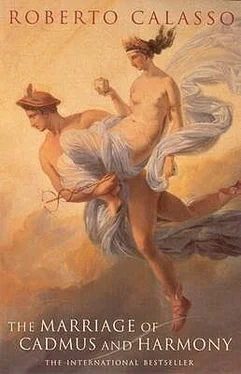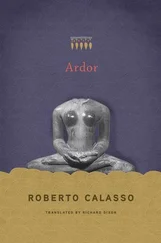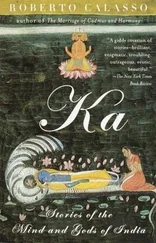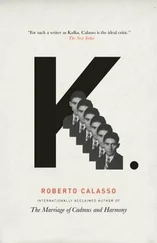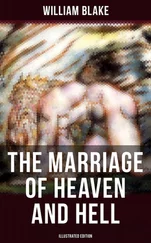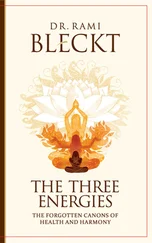Then another thought occurred to Ariadne, a thought that followed from the first: if she, Ariadne, had done nothing more than repeat the passion of her mother, Pasiphaë, if she herself was Pasiphaë, then Theseus was the bull. But Theseus had killed the bull, her half brother, and killed him with her help. So had she been helping Theseus to kill himself? Or were the only people to get killed in this story themselves: Pasiphaë, who hung herself, Ariadne, who was preparing to hang herself, and her sister, Phaedra, who would hang herself some time later. While the bulls and their victors just seem to swap places, over and over, as if for them the process of killing and being killed was as simple an alternation as undressing and getting dressed again. The bull didn’t experience the ultimate perpendicular death of hanging, the being lifted away from this earth.
When the enamel blue prow of the Athenian ship arrived in Crete, when Theseus stopped King Minos from laying his hands, as he always would, on one of the Athenian girls, when during the games Theseus beat the hateful, imposing General Bull, who used to trounce everybody, then Ariadne began to think that this irreverant stranger might be strong enough to break the bull-obsessed circle in which her family was imprisoned. So she betrayed the divine bull who had dazzled her in a cave, betrayed her brother bull, the Minotaur, betrayed her mother, who had gone mad for a bull, and betrayed her father, who had chosen not to sacrifice the white bull from the sea but to put it out to pasture because it was too beautiful to be killed. At the end of all these betrayals, she found herself on a deserted beach, abandoned by Theseus. But she hadn’t managed to escape the bull.
When Dionysus appeared, sham and seductive, too punctual, too merry, Ariadne sensed that somehow Dionysus and Theseus weren’t rivals at all, but accomplices. Amid the clamor of flutes and tambourines, Dionysus suffocated such thoughts. Ariadne was dazzled by the divine glory the god offered her. And secretly she sneered at Theseus, who had brought that glory on her by his very treachery. She sensed the deviousness of the affair: if Theseus hadn’t broken his word (but he had taken an oath to Athena, she remembered with a start, and Athena scorned marriage), Dionysus wouldn’t have raised her to himself. No point in crying like a peasant girl, when you have a god next to you. But Dionysus doesn’t stay next to anyone. A god is never a constant presence. And off Dionysus went with his noisy followers, to India. Ariadne was alone again.
When the god reappeared, loaded with treasures and slaves, Ariadne observed his triumph and caught the passionate glance Dionysus threw at a young Indian girl, a princess, just one among his many Oriental spoils. Soon Ariadne would find herself crying on a beach again, her hair loose in the wind. With his overwhelming lightness, Dionysus had saved her from what Theseus had done to her, only to repeat the crime himself a short while later, thus making it at once more awful and more splendid. The Indian concubine polluted their bed. Ariadne cried and was constantly obsessed by the fear that Theseus should never come to hear of it! But how ingenuous … Hadn’t she realized yet that Dionysus and Theseus were not really enemies? Those two opposed figures were both manifestations of the same man who went on betraying her, while she went on letting herself be betrayed. “I have grown used to loving the same man forever.” That capacity to love forever was her death sentence, it destroyed any hope of escaping from her obsessive circle, her resplendent crown.
From first to last Ariadne’s story is woven into a crown. “My cousin’s arriving,” the young princess thought when they told her Dionysus had landed on the island. She had never seen this relative, born from his mother’s death pyre and rumored to be so handsome. When he appeared, Dionysus didn’t want to stay in the palace. He gripped her wrist and led her to one of Crete’s many caves. And there the darkness was rent by a dazzling crown. Fiery gold and Indian jewels. Dionysus offered Ariadne the crown as a gift on the occasion of this, their first embrace. Sign of perfection, “herald of propitious silence,” the crown was a circle of seduction. But to seduce also means “to destroy” in Greek: phtheírein . The crown is the perfection of deceit, it is the deceit that circles in on itself, it is that perfection which includes deceit within it.
By the time Ariadne turned her gaze on the handsome Theseus, she was no longer a girl playing with her sisters in the palace of Cnossos. She was a god’s bride, even if no one knew of their union. The only witness had been that shining crown. But when Theseus came up from his father Poseidon’s underwater palace, he too had been holding a crown. It was made of small apple blossoms, dripping water and radiating light. He gave it to Ariadne, as Dionysus had given her his crown. And at the same time Ariadne gave Theseus Dionysus’s crown. For his part, Theseus was repeating the god’s gesture; for hers, Ariadne was betraying the god, so as to enable the Stranger to kill the Minotaur, who belonged to the bull god. When he set off into the dark passages of the labyrinth, Theseus was led by the light of the resplendent crown. His sword sparkled in that light before he buried it in the body of the youth with the bull’s head. So Ariadne brought deception to a higher level: she betrayed her divine partner and at the same time offered his love gift to the man who was taking his place.
But wasn’t the deception already there from the beginning, in the god’s gift to her? Ariadne is deceived precisely as she deceives: she imagines Theseus is the god’s opposite; she sees him as the man who will take her as his bride to Athens, beyond the vicious circle of the bull. When he reappeared in Naxos, Dionysus was waving a shining crown. Ariadne looked at it and thought of the other crowns that had been behind the other deceptions in her life. She realized now that that crown was the same crown and always had been. Her story really was over now; Ariadne would be forever alone, prisoner of that radiant crown in the sky: Corona Borealis.
In any Cretan story, there’s a bull at the beginning and a bull at the end. At the beginning Minos summons Poseidon’s white bull up out of the sea. If it appears, he promises, he will sacrifice it to the god. The bull does appear, but Minos doesn’t keep his promise. The bull is too beautiful, he doesn’t want to kill it, he wants it for his own. It is for that bull that Minos’s wife Pasiphaë will develop her fatal passion.
At the end, Theseus captures a bull at Marathon, and once again it’s the Cretan bull risen from the sea. After its couplings with Pasiphaë the bull had turned wild, and Minos had called for Heracles to capture it. The hero caught the bull and took it away to the mainland. For a long time the bull wandered about the Peloponnese before turning up in Attica. Where nobody had been able to get the better of it, not even Androgeus, Minos’s son, who used to beat all the Athenians in their games. Theseus captured it, at Marathon. He offered it to his father, Aegeus, who sacrificed it to Apollo. Everything between that beginning and that end, which is to say Ariadne’s destiny, takes place within the displacement of a sacrifice: from Poseidon to Apollo, from Crete to Athens. That passage is strewn with corpses. The mute, the sacrificial victim is part and parcel of the religious rite. But the myth claims other victims for itself, those who fall around the place of sacrifice, iron filings in the magnetic field. Out of the sacrifice, together with the blood, stream the stories. Thus the characters in the tragedy emerge. In the Cretan stories these characters are Pasiphaë, the Minotaur, Ariadne, Phaedra, Minos, Hippolytus, and Aegeus himself. Returning from Crete, Theseus forgets to lower the black sails, and Aegeus kills himself by leaping from the Acropolis. It’s the last footnote to the displacement of the sacrifice.
Читать дальше
